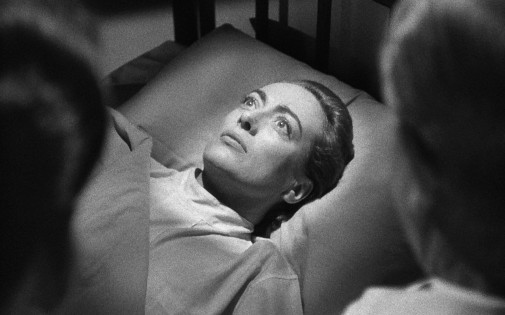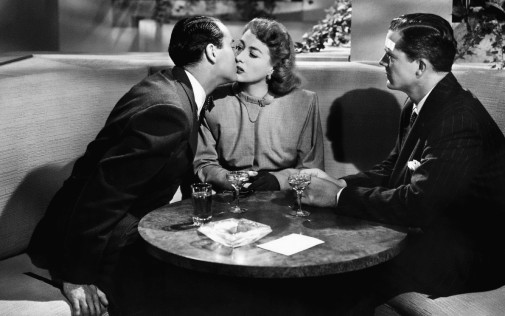
After more than a decade as one of MGM's brightest and most formidable stars, the 1940s were a turning point for Joan Crawford. While she struggled to reinvent herself during these middle years of her career, many of the actress's best movies came from this phase. She left behind a series of lackluster offerings from her original studio, finding new power when carefully choosing projects at her new home, Warner Brothers. It wasn't easy, but she triumphed, winning an Oscar for 1945's Mildred Pierce and going on to get two other Best Actress nominations. More importantly, she solidified her legacy, challenged herself as an actress, and proved to everyone she was more than a flapper or talentless glamour girl.
During this period of Crawford's filmography, 1947 was a particularly auspicious year. She broke our hearts in a romantic tragedy, impressed AMPAS with explosive neurosis, and went on to star in one of Hollywood's most interesting post-war melodramas…

While Humoresque, the remake of a Frank Borzage movie from 1920, premiered in 1946, it's wide release only happened in January of the next year. It was then that audiences were able to meet one of Crawford's most alluring creations. Playing second fiddle to John Garfield, she's a wealthy patron of the arts who falls in love with a prodigious violinist from humble beginnings. The plot of the movie ends in tragedy for Crawford's character, but the punitive narrative doesn't stop the star from exploring how one can bear one's soul for the camera while keeping a façade of pristine glamour. It's a beautiful performance and she's beautiful in the movie, so much so that this might represent the peak of her loveliness as a screen siren.

No matter how wonderfully Humoresque showcases Joan Crawford's abilities, hers is a borderline supporting role. Her other 1947 releases would feature her front and center and build themselves around her presence. The first of those pictures was Curtis Bernhard's Possessed, the first time the actress ventured into the murky waters of genre filmmaking with a tinge of horror. It also represents one of Crawford's most daring experiments when it comes to testing the plasticity of her star persona. Just look at the way she enters the film, stumbling catatonically through Los Angeles streets at dawn. Ashen faced and off the deep end, she's the zombified carcass of a romantic heroine whose turmoil wrecked her to the core.
A noirish flashback structure lets us see what brought upon the destruction of this woman. In that story, we find Joan Crawford playing up the mannered affectation that so many people nowadays point at as a signifier of hammy old-school film acting. That said, the actress' turn in Possessed is far from being an accidental turn to exaggerated histrionics. Quite the contrary, her approach to the role ends up being a canny implosion of movie star acting, the brittle artifice of it all crashing down into a cesspool of nervous paranoia. By the end of this unseemly spectacle, Crawford's erratic characterization may not present a fleshed-out human being, but it offers instead a portrait of paralyzing panic as a state of being.

Possessed conquered my admiration and it won Crawford a second Best Actress nomination. However, if asked what's her best movie from 1947, my answer wouldn't be that psychological horror. Instead, Otto Preminger's Daisy Kenyon earns the title, injecting a love triangle premise with the trauma of a world ravaged by war and the cynicism of an embittered society. Daisy Kenyon, the movie and the character, thus becomes a symbol for a generation of women who spent their entire adulthood fighting. First through the Great Depression, then through the war, until they reach middle-aged and are tired of all the struggle.
It's a complicated movie with no fully-likable characters, a weird experiment that exploits Joan Crawford's star power with sharp precision. Daisy Kenyon also embraces the mess that is its character's thorny relationships, creating a situation where a satisfying ending becomes something next to impossible. The pleasure of a happy conclusion is an impossible dream in the cosmos of this melodrama. Even the smiles of happiness feel vaguely hollow, devoid of the genuine mirth they might otherwise highlight. It's no wonder that the film earned dismissive reactions when it premiered, suffering even from its own makers' disinterest in the following years. Still, I'll always hold the picture dear to my heart as one of the best Joan Crawford vehicles.
If you're a Crawford fan, you'll be happy to know that these three movies are available online. Humoresque is available to stream on DirecTV. You can also rent it and those two other films from Amazon, Youtube, Google Play, and others.